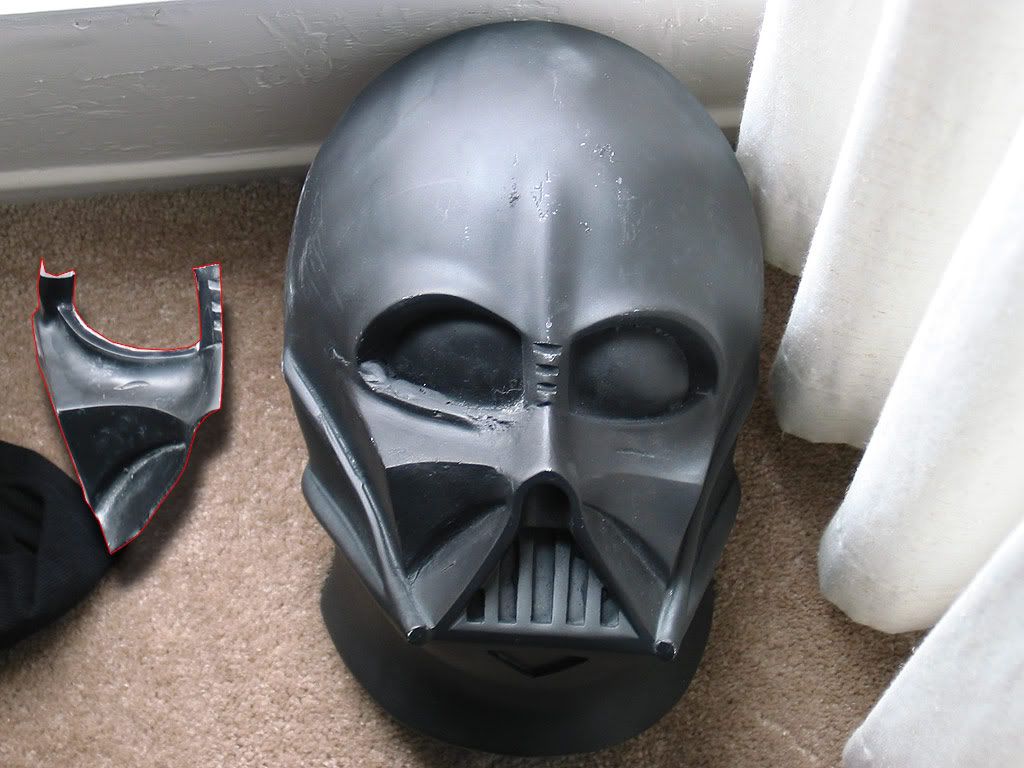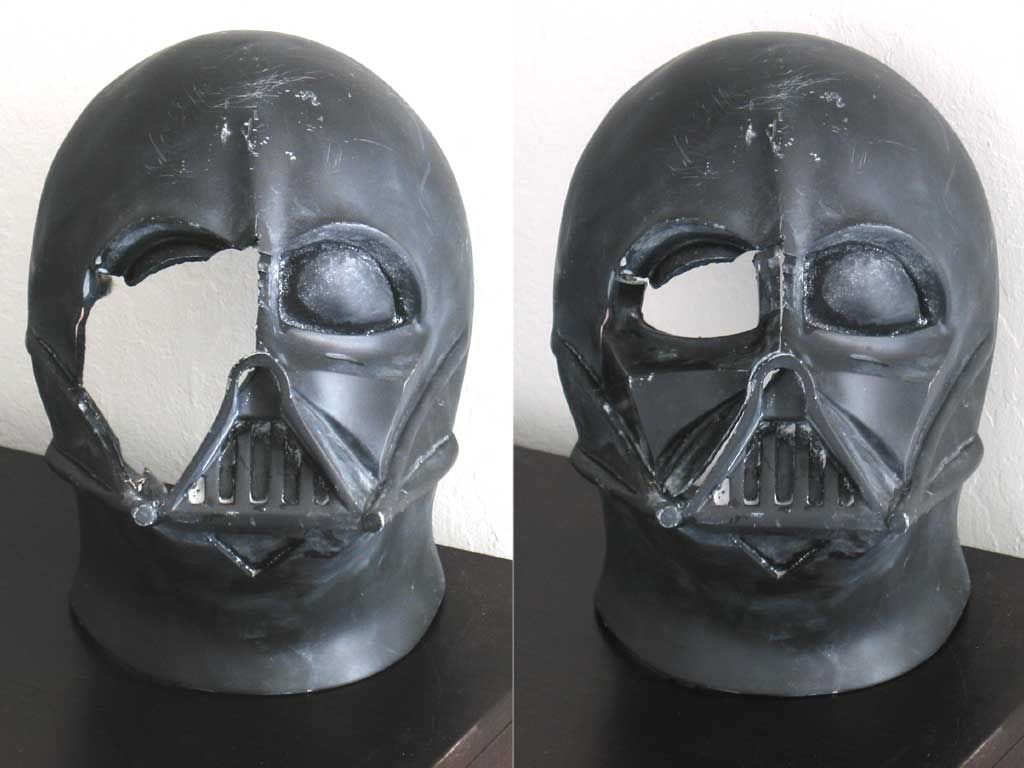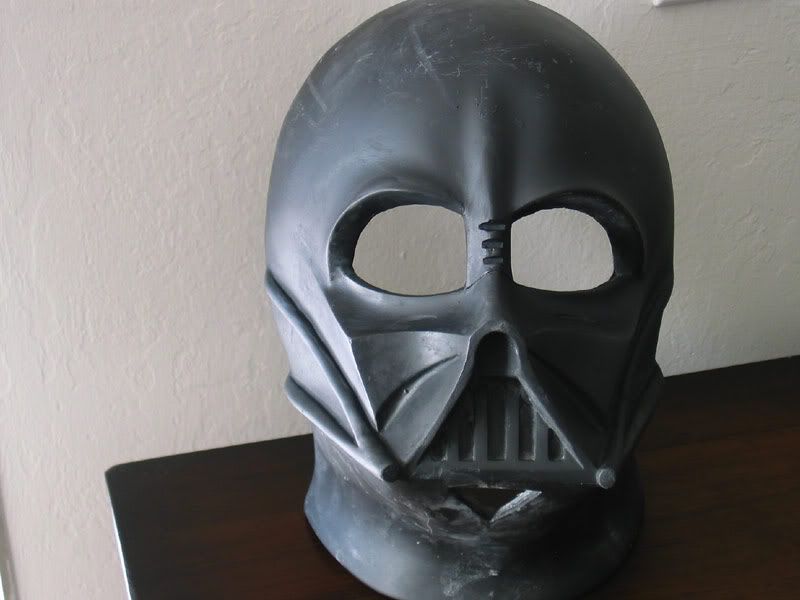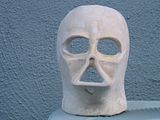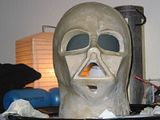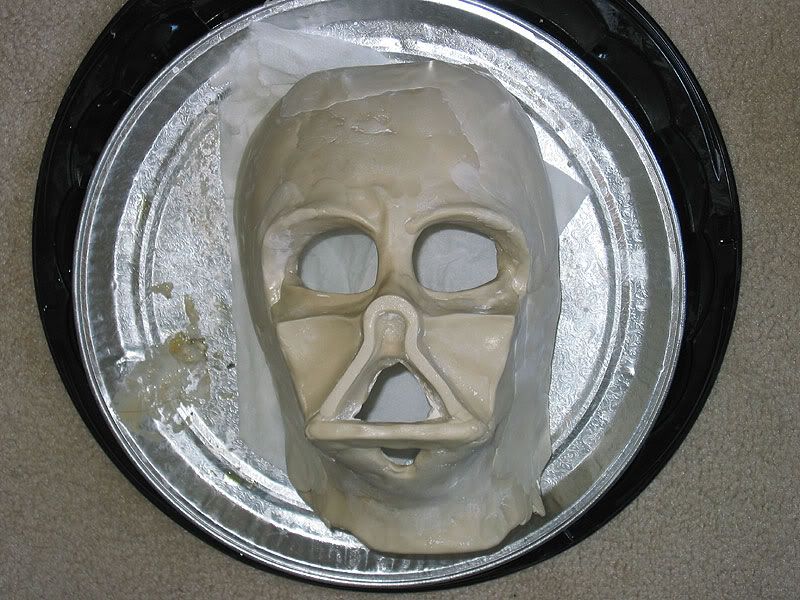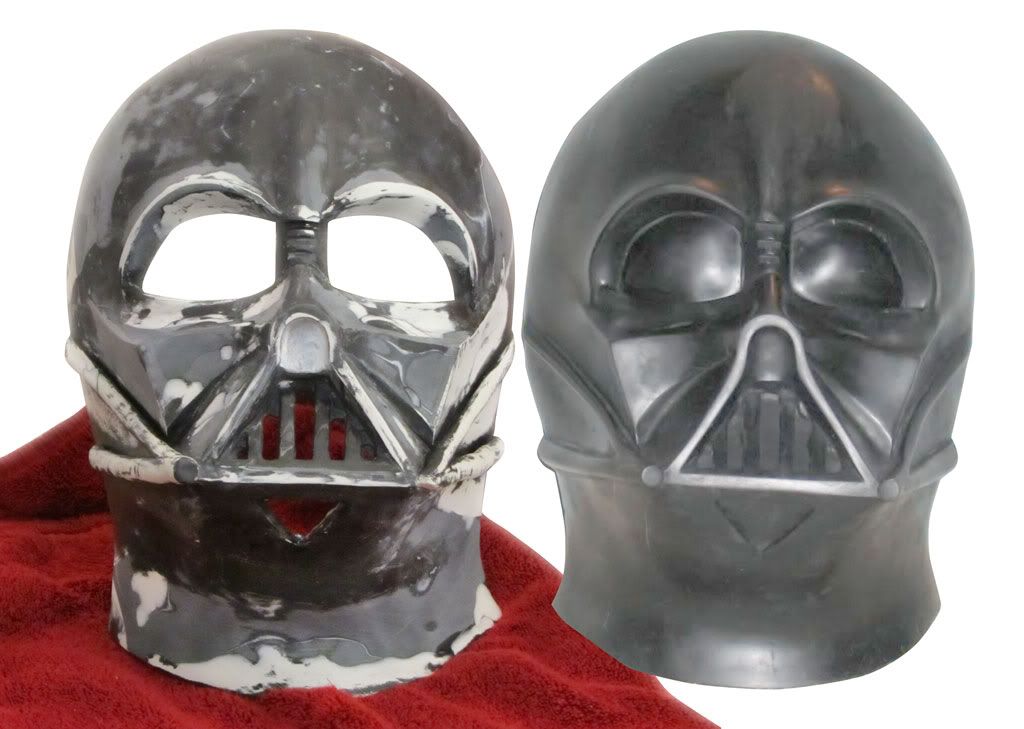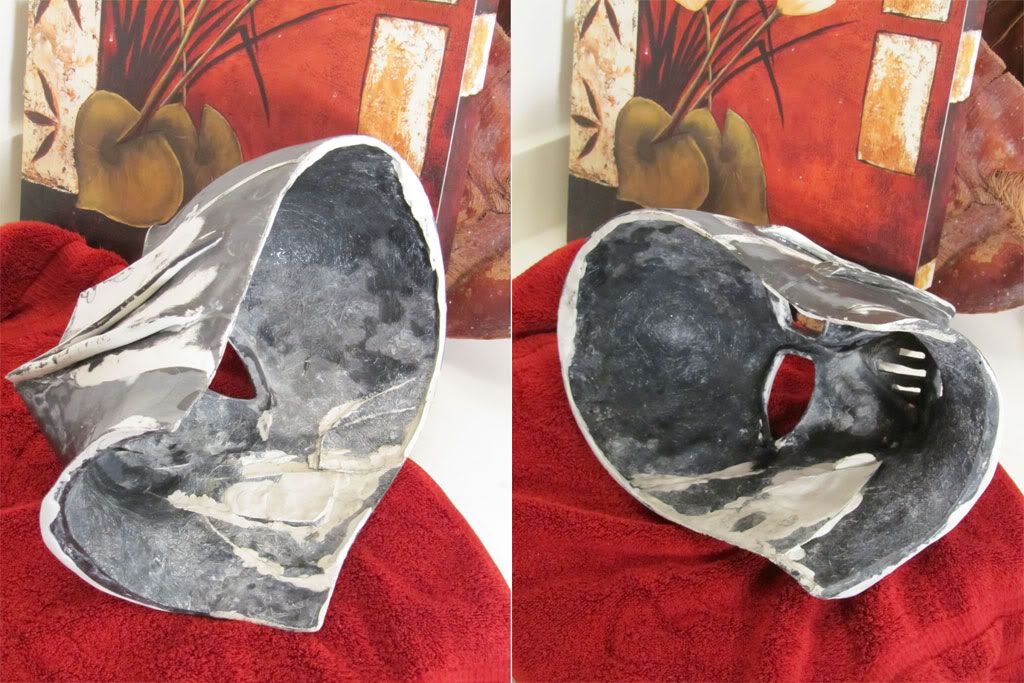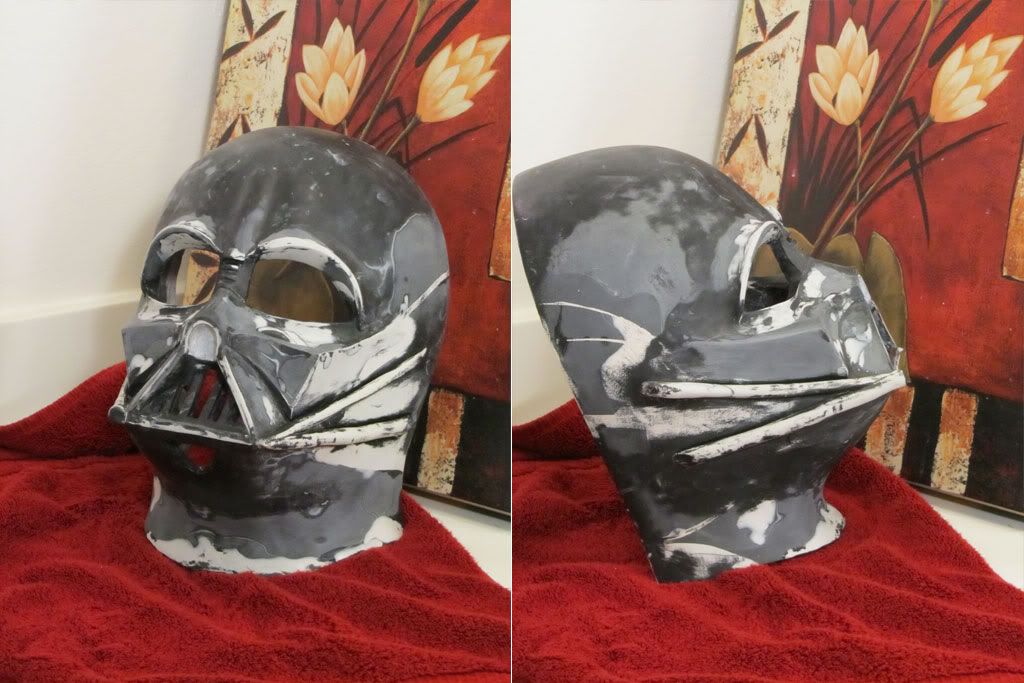I'm deeply touched by community support and the warm comments. Thanks, guys!!
I still have some tweaks and refinements to make. As I was wet-sanding Quasi this morning, a lot of the black acrylic paint (which I use because it's non-toxic and helps me study the surfaces better) came off, revealing overlapping layers both white and off-black clays - each bringing back memories of the efforts to bring Quasi this far. I was taken aback by the history all at a glance. Originally, I decided to only photograph my work in black, partly because most of my work-in-progress shots in the past seemed to be too distracting for people to interpret, and partly because I wanted to keep certain methods out of the hands of recasters. But it became apparent that this was a superb opportunity to photo-document my work, so if I ever had to approach eBay to confront a recaster, I could say, "Look, this isn't just a mere modification of some off-the-shelf mask we're talking about here. This is indeed my work!!"
(Above: Left - Quasi. Right - GH ANH)
The above may be difficult to interpret, but if you've tracked my progress thread on The Prop Den, I use two part clay that's white, and on occasion I either paint over it, or I mix black acrylic paint directly into the clay, which results in an off-black appearance. As you study the photo carefully, you'll see that the crown and certain parts of the chin remain black and are more or less the same. The rest that is off-black and white are the areas that are either sculpted over, or outright replaced. (And when I said "replaced" I literally mean "Mac took a Dremel and eradicated that area, and outright sculpted that area brand new". I got to the point where I grew really tired of sanding and modifying. I achieved better results replacing the area or facial feature outright. Sanding the two-part clay seemed a little more benevolent to my lungs than creating more fiberglass dust.) Also, not all the black acrylic paint came off the white and gray areas, so it's probably confusing.
But if you don't mind focusing past the "camouflage" and just compare the lines, surfaces and structures, you can see that Quasi is very much a different animal, now, compared with its progenitor, the GH ANH.
One thing you may have noticed is that the head shape of Quasi differs greatly, although there very crown retains the same shape. I could not sand, bend or manipulate the GH ANH skull for the life of me, to create a more slender head shape. The more slender appearance you see is the result of literally cutting the tubes off, then cutting up the skull and neck, and re-angling and re-joining the separate pieces, and blending them until they were seamless.
So on the inside:
You can see that each cut surface represented a separate attempt, so this took several passes to get the head to the shape I wanted. In specific cases, the pieces of fiberglass merely served as an armature, as I set them deep enough to where I could add more two-part clay on the outside to get the sculpted surface I wanted.
Pardon the mess, but bear in mind as you're looking at the above, that both white and grey areas are the two-part clay (again, I sometimes mix black paint directly into the white clay, rather than just paint over the clay). I realize it's not obvious, but the darker areas are not necessarily the original gelcoat!
Quasi is a bit like Frankenstein under the paint in that you never knew it had been cut up into so many pieces. Each facet represents the history of its metamorphosis.
Yes, I'm seriously considering doing a run of these. I will endeavor to make Quasi as affordable as possible; my only caveat is that I'm going to ask future owners to join me in a serious gentleman's agreement not to recast this and to not allow this to fall into the hands of recasters. If you've followed the progress thread on The Prop Den, this helmet represents two and a half years (or more) of labor of love.
Having seen the work of fellow sculptors such as Cyberman and the tragedy of seeing substandard, warped white polyurethane cheap recasts of his Darth Maul on fleabay, and seeing how the recaster is lurking among us, I will say to that recaster now: if you want a Vader so badly, I'll send you a Don Post Deluxe. Just please leave my sculpt alone.
But for everyone who, like me, had a run of bad luck with online vendors but who simply wanted to have something that captured that movie essence, then I hope this can help you towards your collecting dreams!

